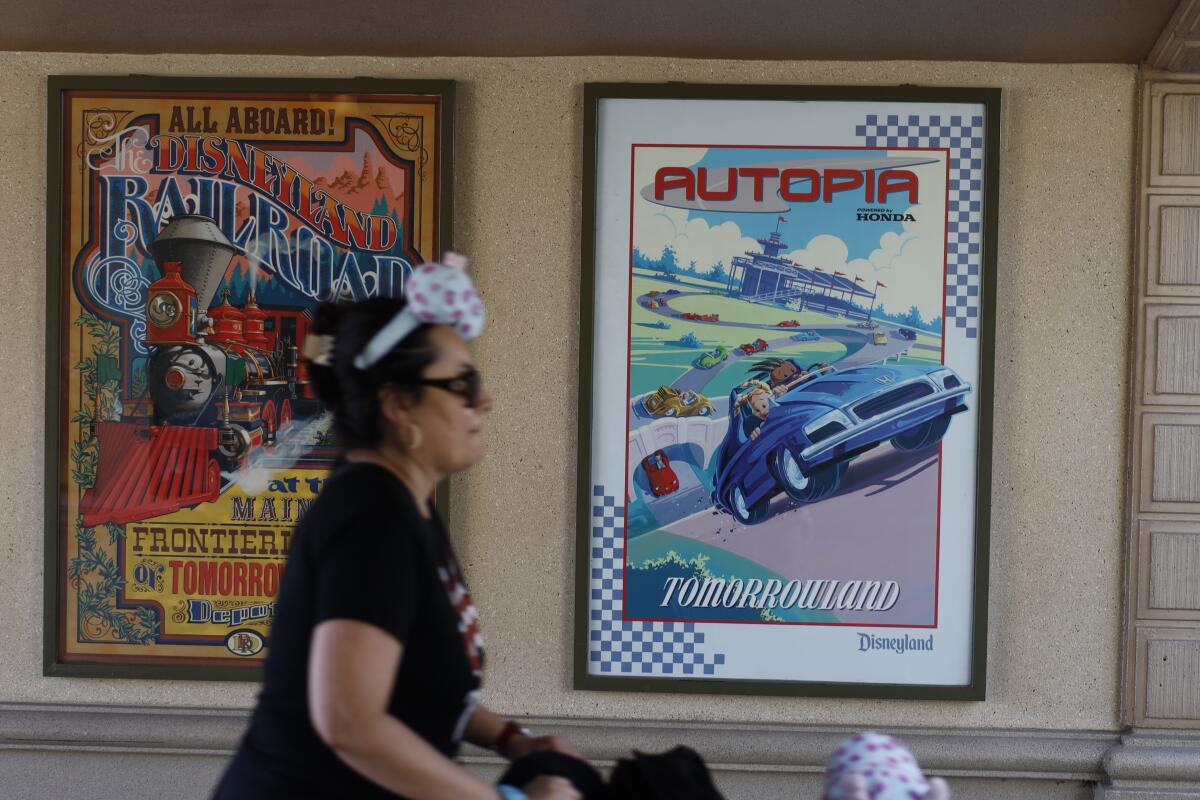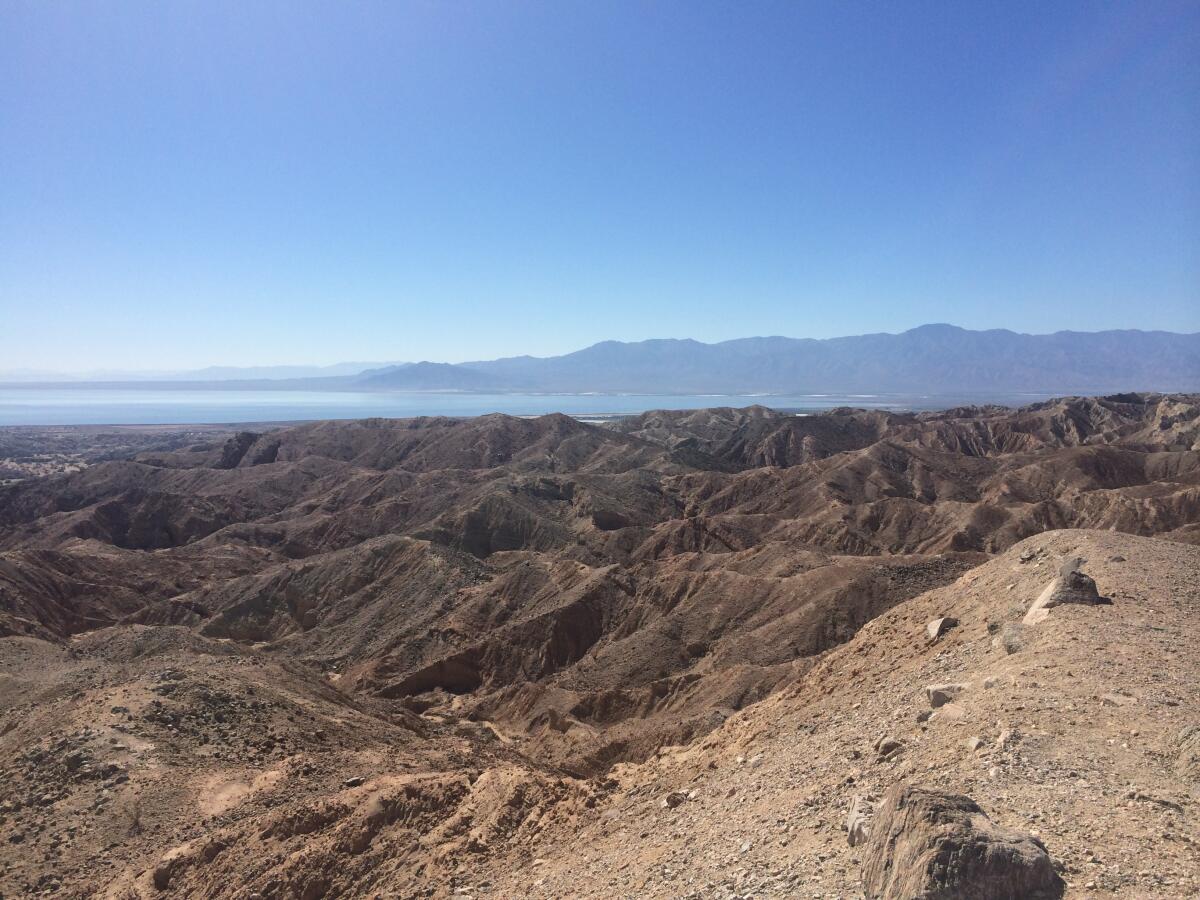Shivering in the early-morning air as the Rose Parade rolled down Pasadena’s Colorado Boulevard on New Year’s Day, I was thrilled to see that the first float was basically a giant advertisement for electric vehicles.
The only question: Was it greenwashing?
Paid for by Honda, the parade’s presenting sponsor, the float was dazzling. Decked out in red, white and yellow flowers, it featured two larger-than-life replica Honda EVs on a giant platform, a rotating globe towering over them. The float was emblazoned with the words “Electrified Dream,” a play on Honda’s slogan, “the Power of Dreams.”
Newsletter
You’re reading Boiling Point
Sammy Roth gets you up to speed on climate change, energy and the environment. Sign up to get it in your inbox twice a week.
You may occasionally receive promotional content from the Los Angeles Times.
The obvious message: The future of cars is electric. Also, buy Honda.
Thing is, Honda has long been a laggard on EVs. Although the Japanese automaker has a strong track record on gas-electric hybrids and fuel efficiency, the company’s Prologue SUV and its coming-soon Acura ZDX SUV — the two cars featured in the Rose Parade — are currently its only battery-electric offerings in the U.S.
My view of Honda’s “Electrified Dreams” Rose Parade float.
(Sammy Roth / Los Angeles Times)
Also problematic? As Southern California News Group’s Steve Scauzillo writes, Honda’s Rose Parade float was not itself electric. The flower-covered vehicle was powered by gasoline, a polluting fossil fuel.
“It certainly is our desire to electrify our Rose Parade float in the near future,” a spokesperson told Scauzillo.
I’m sympathetic to the difficulties of electrifying giant parade floats. As outlined in Scauzillo’s article, these things are a lot heavier and more expensive than passenger cars to build and operate. Many of them have elaborate moving pieces.
That said, Honda’s engineers have had more than enough time to solve this problem.
In 2011, when Honda became the Rose Parade’s top sponsor, the automaker kicked off the proceedings with a hybrid float. A company spokesperson said at the time, “You’ve got to start somewhere, right?”
Alas, instead of spending the last 15 years investing in clean cars and designing a parade float that doesn’t spew deadly air pollution, Honda focused on fuel efficiency and hybrids, while making itself out to be a visionary clean transportation company.
I learned about this strategy last year while reporting on Honda’s sponsorship of Disneyland’s Autopia attraction. The ride’s petroleum-powered vehicles belch heat-trapping pollution despite occupying prime real estate in Disney’s Tomorrowland. The attraction ends with drivers passing under the words, “Autopia — Powered by Honda. Powering Your Dreams Through Tomorrow.”

A sign for Autopia, powered by Honda, near the entrance to Disneyland.
(Allen J. Schaben / Los Angeles Times)
At a certain point, you have to turn dreams into reality. We’ve reached that point.
Which it’s possible to do, by the way. After I reported on Autopia’s gas-guzzling cars, Disney promised to convert the attraction to electric vehicles. And even though Honda seemingly hasn’t cracked the code on an electric float, one Rose Parade sponsor figured it out. The La Cañada Flintridge Tournament of Roses Assn.’s space exploration-themed “Rover Rendezvous” float was mostly powered by electricity this year, Scauzillo reports.
So yes, Honda was engaged in greenwashing. And yet …
And yet I couldn’t help but love the “Electrified Dreams” float. Here I was with 800,000 people on New Year’s Day watching one of the nation’s most iconic events, and the first thing we saw was an ad for climate-friendly cars.
Sure, the company was primarily trying to sell us a product. But that’s how capitalism works. During a time of climate peril, as a climate-denying president prepares to take office, the float made me dream of better days.
On that note, here’s what’s happening around the West:
THE ENERGY TRANSITION

The Mecca Hills Wilderness, near the eastern end of California’s Coachella Valley, will be part of Chuckwalla National Monument.
(Sammy Roth / Los Angeles Times)
President Biden will be in Southern California’s Coachella Valley on Tuesday, with plans to designate two national monuments: Chuckwalla National Monument in the desert and Sáttítla National Monument up north. The Times’ Clara Harter writes that tribes and conservationists worked with solar companies to craft the Chuckwalla monument boundaries to balance habitat protection and clean energy development.
In Nevada, meanwhile, officials in Nye County — at the heart of the large-scale solar boom — just voted to block new solar farms within one mile of homes, as Robin Hebrock reports for the Pahrump Valley Times. I wrote about Nye County as part of my deep dive into large-scale solar and its environmental consequences in 2023.
In Montana, the fight over wind energy has been going on so long that there’s now a book about it. After reading this review by Ian Max Stevenson for High Country News, I’m excited to get a copy of “The Crazies” by Wall Street Journal reporter Amy Gamerman, about wealthy landowners fighting wind turbines in the Crazy Mountains.
Fights over oil and gas development haven’t gone anywhere, either:
- An Arizona community defeated a proposal to build a gas plant less than half a mile from residents’ homes. Now the gas plant might be built near a lower-income farming community. (Joan Meiners, Arizona Republic)
- The Montana Supreme Court has ordered state officials to analyze the climate impacts of a newly opened gas plant along the Yellowstone River. But in a win for the state’s largest utility company, the court won’t force NorthWestern Energy to stop operating the gas plant in the interim. (Darrell Ehrlick, Daily Montanan)
- President Biden banned new oil and gas drilling in most coastal waters, including off California. That said, most production occurs in parts of the Gulf of Mexico not covered by Biden’s order. (Lisa Friedman, New York Times)
- The Biden administration permitted a fossil fuel company to inject carbon beneath a San Joaquin Valley oil field, citing climate benefits. Some environmentalists are skeptical. (John Cox, Bakersfield Californian)
As Biden gives way to Trump, fossil fuel industry executives will keep working hard to secure profits. The U.S. oil and gas industry spent $219 million to influence the 2024 federal elections, with the vast majority of the money going to Republicans, per this analysis by Karin Kirk at Yale Climate Connections.
Those dollars may already be paying off. Moments after he was elected House speaker again, Republican Mike Johnson pledged to promote fossil fuel drilling and end what he claims are “ridiculous EV mandates.” But as the New York Times reports, no such mandates exist.
Speaking of electric vehicles, Tesla is still the nation’s top seller of EVs, by far. But Elon Musk’s company sold fewer cars in 2024 than it did in 2023 — its first-ever drop in sales. Details here from The Times’ Russ Mitchell.
Two more energy stories:
- Here’s a fascinating illustrated breakdown of the “playbook” used by oil and gas executives to evade financial responsibility for plugging wells in the Permian Basin and elsewhere, leaving taxpayers to foot the expensive bill for cleaning up air and water pollution. (Mark Olalde and Peter Arkle, ProPublica and Capital & Main)
- The Biden administration tweaked a hydrogen tax credit to add eligibility for hydrogen produced via nuclear energy or natural gas with carbon capture eligible, in certain circumstances. (Timothy Gardner, Reuters)
ON THE LANDSCAPE

Angelique Fabbiani-Leon, from left, Jordan Thoennes, Manon von Kaenel and Andy Reising from the California Department of Water Resources conduct the first snow survey of the season at Phillips Station on Jan. 2.
(Brooke Hess-Homeier / Associated Press)
Several big stories out of California this week, starting with the latest water supply news:
- Sierra Nevada snowpack is sitting at 108% of the average for this time of year — pretty good. Still, a dry start to the water year in Southern California could mean looming supply shortfalls. (Noah Haggerty, L.A. Times)
- Home insurers can now pass on the cost of reinsurance to customers, part of an effort by California officials to persuade insurers to keep offering policies as climate-fueled wildfires raise liability costs. Some consumer advocates worry that the new policies will lead to higher rates, without doing enough to benefit consumers. (Laurence Darmiento, L.A. Times)
- More than two decades after state lawmakers voted to ban agricultural burning in the San Joaquin Valley — which pollutes the air with dangerous fumes — it’s finally happening. (Rebecca Plevin, L.A. Times)
- With smoldering underground garbage continuing to spew noxious odors into nearby neighborhoods, L.A. County’s second-largest active landfill has stopped accepting new trash. (Tony Briscoe, L.A. Times)
Elsewhere in the West:
- 2024 was Phoenix’s hottest year on record, by a lot. (Hayleigh Evans, Arizona Republic)
- Much as ranchers hate them, prairie dogs help other species survive. And as surface temperatures rise, their cool underground burrows may become important refuges. (Christine Peterson, High Country News)
- Colorado has plans to build reservoirs capable of storing more Colorado River water than the entire state currently uses. “That’s crazy,” one California official says. (Heather Sackett, Aspen Journalism)
ONE MORE THING
I enjoyed going on L.A. Times Today, which airs on TV station Spectrum News 1 in Southern California, to discuss what Trump might mean for climate change. You can watch my conversation with host Lisa McRee here.
This is the latest edition of Boiling Point, a newsletter about climate change and the environment in the American West. Sign up here to get it in your inbox. Or open the newsletter in your web browser here.
For more climate and environment news, follow @Sammy_Roth on X and @sammyroth.bsky.social on Bluesky.

